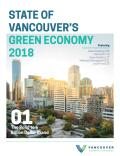
By 2050, about 70% of the world’s population will live, commute and work in urban areas. Between now and then, cities and suburbs will undergo significant transformations to create sustainable living conditions for their residents. Mobility and energy are the twin pillars of these transformations, and both will require radical adaptation to meet demographic and economic growth without increasing congestion and pollution. Cities will require mobility and energy solutions that are sustainable, affordable, secure and inclusive, and integrated with customer-centric infrastructure and services. Thus, the convergence of energy and mobility is critical.
These are exciting times in which new technologies allow people to rethink the way they live in a more sustainable and efficient manner. Smart mobility. Smart water. Smart grid. Smart integration. These are the foundations of tomorrow’s cities, which are being realized today.
Leading businesses and investors are now working out how to align themselves with the objectives of the Paris Agreement.
Carbon pricing is emerging as a key mechanism to reduce greenhouse gas (GHG) emissions, which means that private and public stakeholders are seeking an informed view of how carbon-related price signals can drive global emission reductions in line with these goals. In 2017, CDP and the We Mean Business Coalition launched the Carbon Pricing Corridors initiative with the aim of enabling large market players to define the carbon prices needed for industry to meet the Paris Agreement.
This inaugural report, Carbon Pricing Corridors: The Market View, was published in May 2017, covering the power sector and laying the ground-work for energy-intensive industries.
